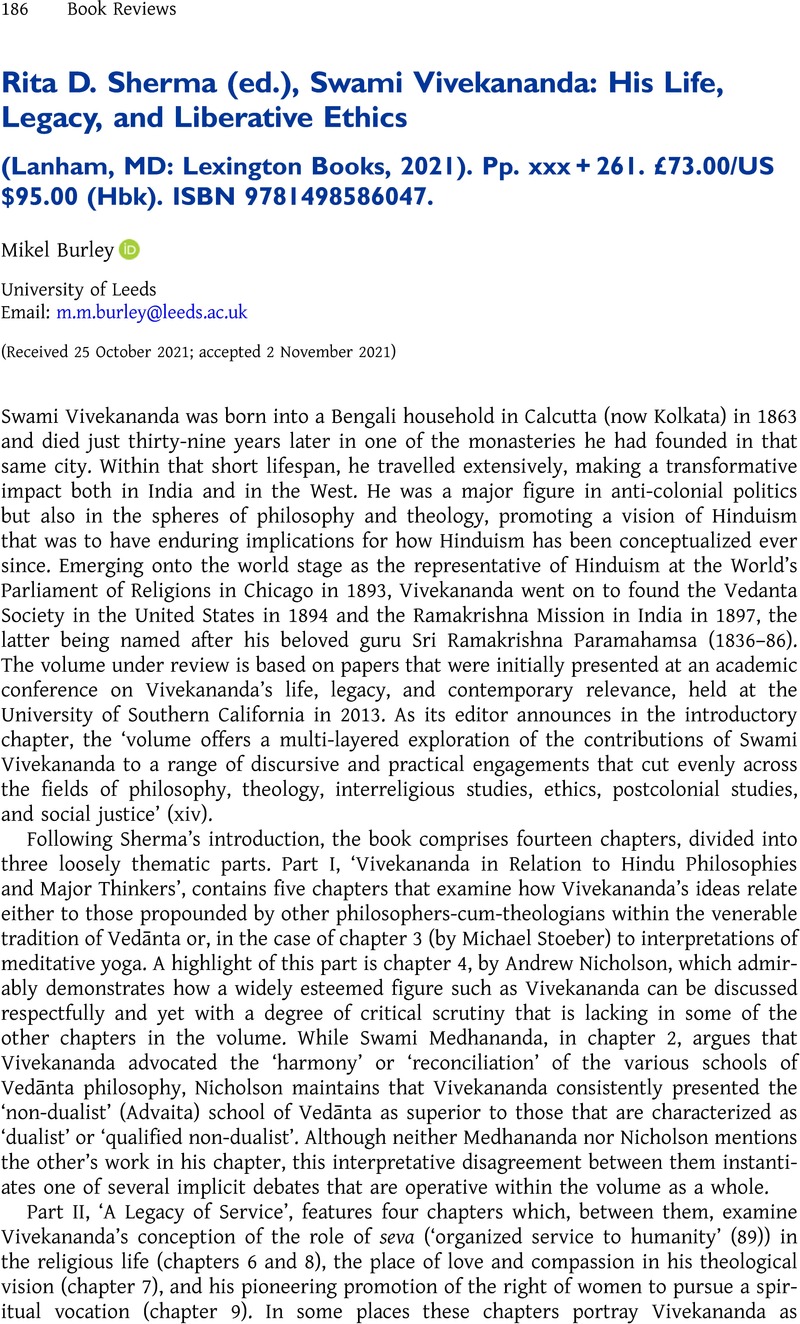No CrossRef data available.
Article contents
Rita D. Sherma (ed.), Swami Vivekananda: His Life, Legacy, and Liberative Ethics (Lanham, MD: Lexington Books, 2021). Pp. xxx + 261. £73.00/US$95.00 (Hbk). ISBN 9781498586047.
Review products
Published online by Cambridge University Press: 03 December 2021
Abstract

- Type
- Book Review
- Information
- Copyright
- Copyright © The Author(s), 2021. Published by Cambridge University Press



